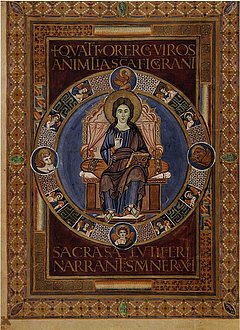
The Scriptures, carefully copied over and over for generations, have survived both the wear of time and human attempts to destroy them. Today they still form the world best-seller and universally best-known book. Yet, this Sacred Book has traversed many perilous times during its very long history!
The miracle of its transmission
As early as 303 AD., Diocletian demanded, by royal edict, that every copy of the Bible be destroyed by fire. Many Christians and Bibles were savagely suppressed. The Christians kept a low profile for a certain period of time and Diocletian believed that he had effectively put an end to the Scriptures. He struck a medal with the inscription: "The Christian religion is destroyed and the worship of the gods restored." But some 22 years later, Constantine ascended the throne and made Christianity the official religion of the empire. The Bible was then established firmly by the emperor, who personally commissioned 50 copies at his own expense!
In the 18th century, French rationalist Voltaire, who had practically pronounced the funeral eulogy of the Bible, provides another example. Yet the Word of God was not extinguished. Its former detractors died, its critics were defeated, and the Bible remained as strong as ever. Indeed, the Bible is at once the most opposed and the most popular book in the world. Did not Jesus warn: "Heaven and earth shall pass away, but my words shall not pass away" (Luke 21:33)? But along the miracle of its transmission, we can also speak, in the face of persecution, of the equally great miracle of its preservation.
The miracle of its preservation
As we know, only a small percentage of books have a life-span of over one hundred years, and only a very small fraction are still around after a thousand years. As such, the Bible is an exceptional book. Furthermore, when we examine the circumstances and periods through which the Bible survived, it becomes truly extraordinary. Theologians agree that the indestructibility of the Bible is a strong indication of its divine origin.
The exceptional preservation of the Bible is observed in several ways:
- on the one hand, the text itself has remained intact:
People sometimes ask how we know that we have the original scriptures? Or, how do we know that the Bible we have is the same as the one that was originally written? Now it turns out that we possess a great number of well-preserved Greek texts, from which it is possible to clearly determine the content of the original Greek New Testament. As for the Old Testament, even though there are not as many manuscripts as for the New Testament, the text itself has remained intact.
- This is attested by a very important fact:
Before 1947, the oldest known Hebrew manuscript of the Old Testament was the Masoretic Text, dating from 1000 AD. As this manuscript is much more recent than the facts it alludes to, many critics have scoffed at the Scriptures and questioned the fact that the Old Testament could have remained unchanged since the oldest manuscripts were as recent as 1000 AD. It all changed in 1947 when the Dead Sea Scrolls were discovered, and dating anywhere from between 100 BC to 100 AD!
The Dead Sea scrolls (Qumran)
When archaeologists continued to search the site where these manuscripts were found, they discovered at least one part of each book of the Old Testament, all except the book of Esther. If one compares the Hebrew text of the Dead Sea Scrolls with that of the Masoretic texts (these documents being separated by about 1000 years), only minimal differences are detected which do not alter the meaning of the text, for example "He went to Jerusalem" vs "He went towards Jerusalem," a proof that the original Hebrew text had not been changed.
The Fathers of the Church constantly quoted the Holy Book in their literary works. No book of antiquity is better attested than the Bible.
_________________________________________
The Mary of Nazareth Team